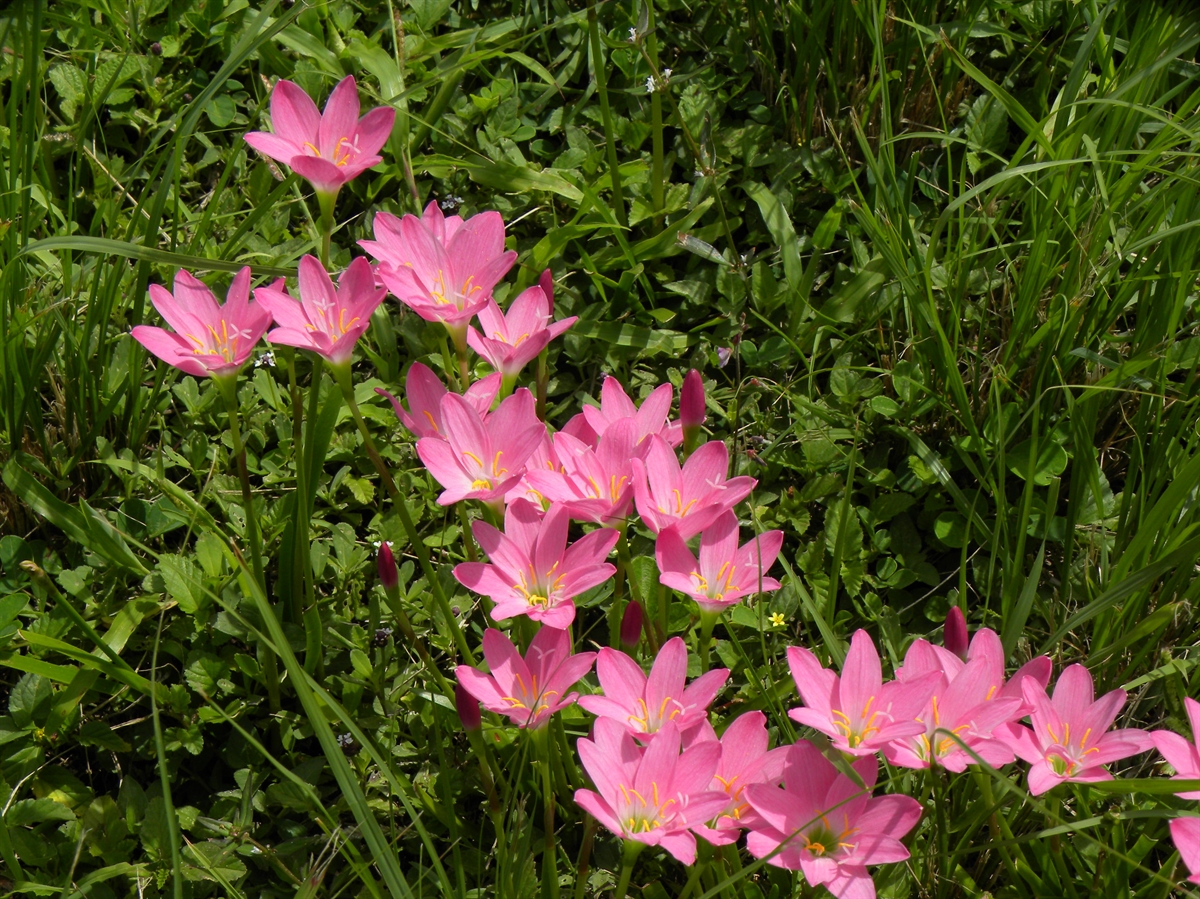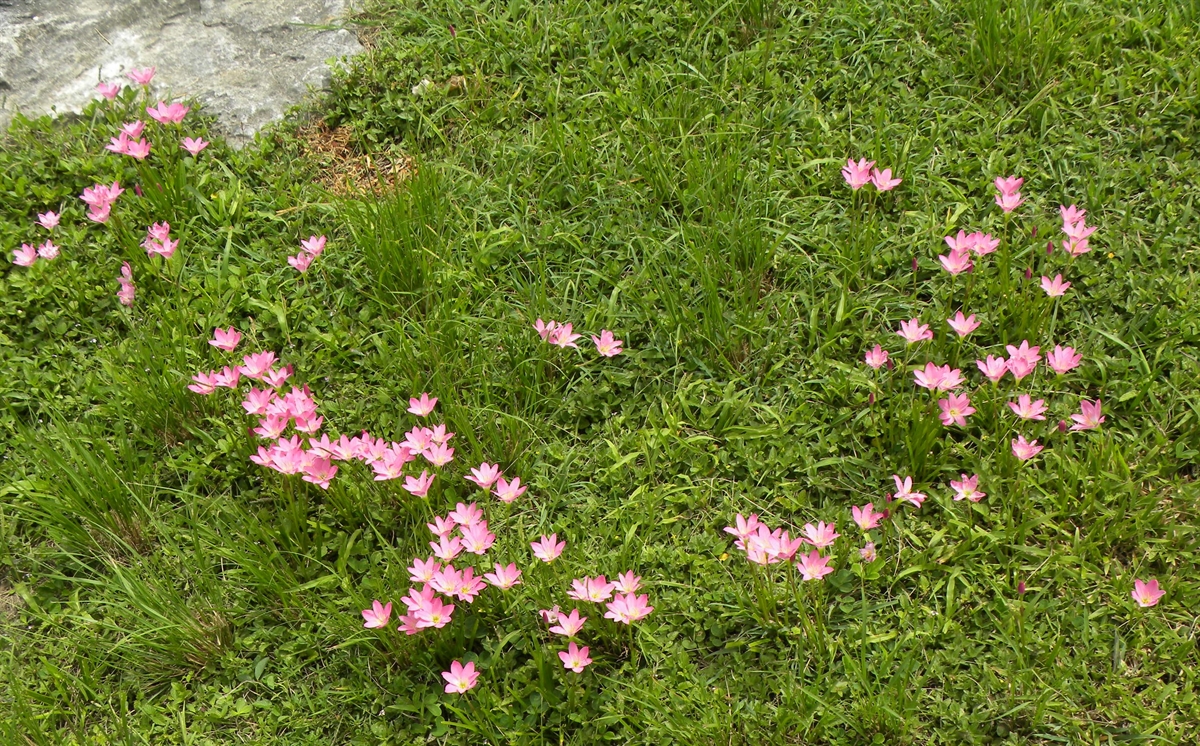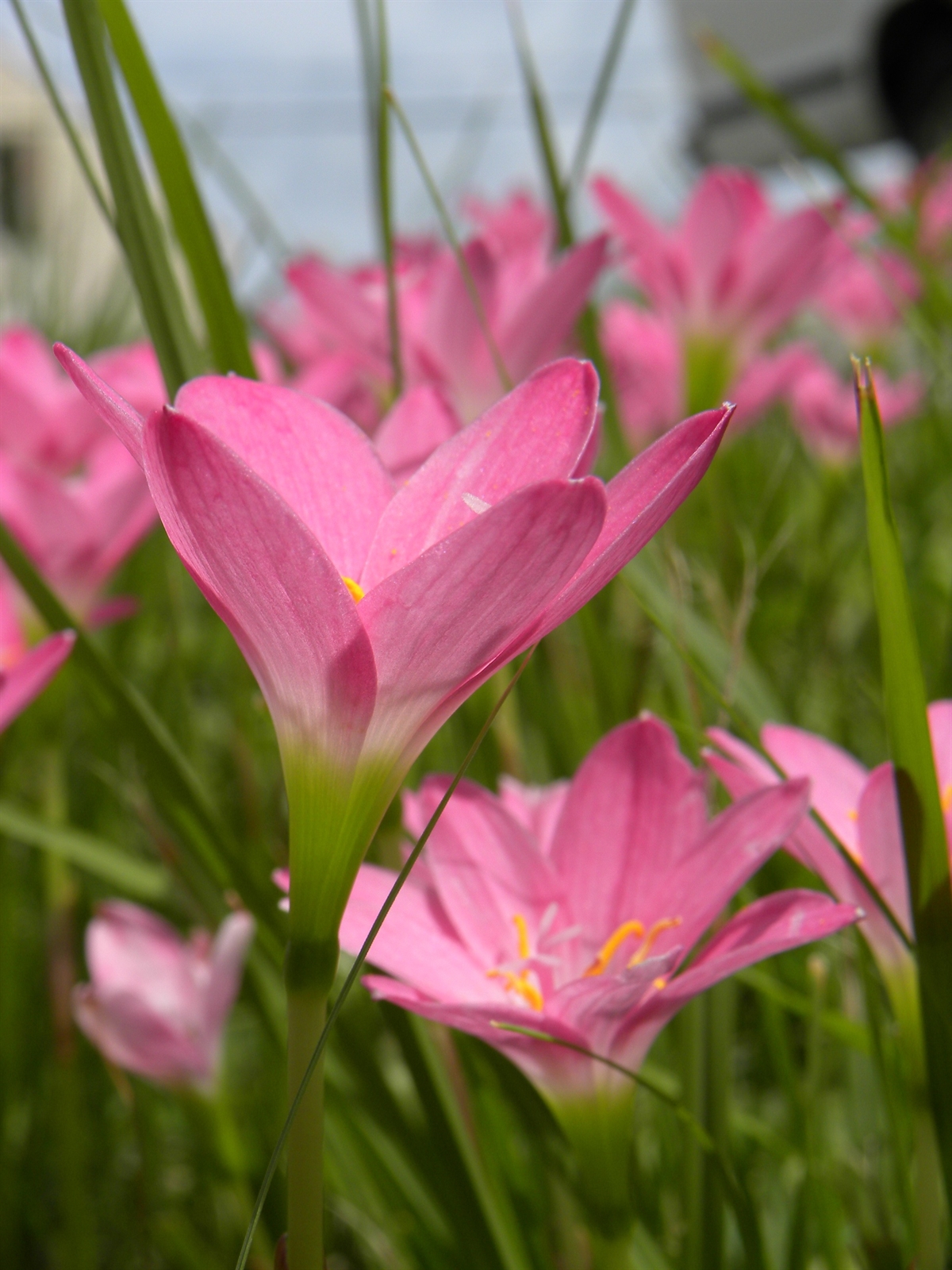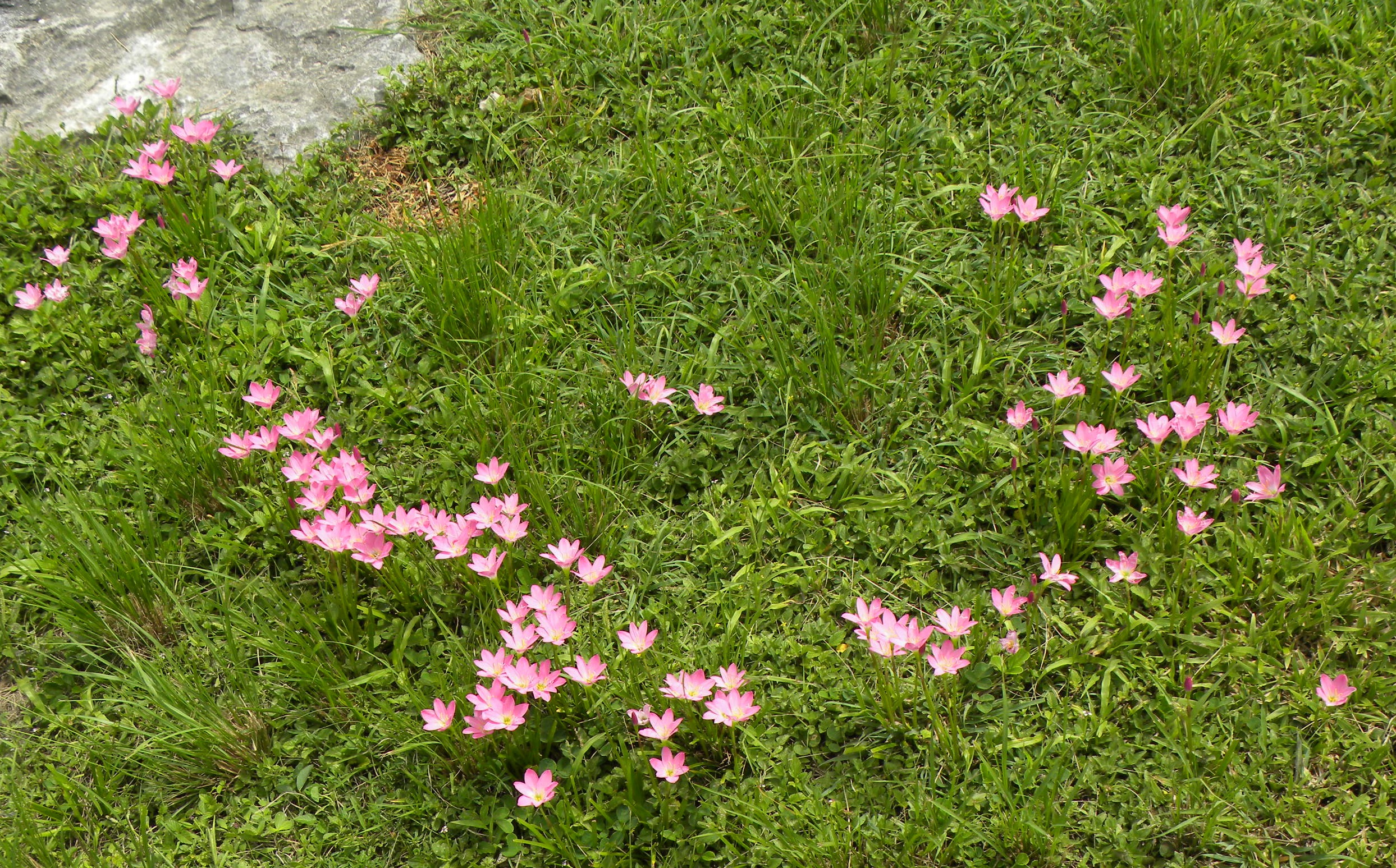Habit: Zephyranthes rosea grows as a slightly succulent herb from a fleshy underground bulb with a basal rosette of leaves. The leaves are linear, parallel veined to 20 cm long and 0.5 cm wide with an acute leaf apex and entire margin.
The complete, perfect, actinomorphic flower is solitary and surrounded by a spathe. The calyx has 3 pink sepals and the corolla has 3 pink petals. The calyx and corolla are fused together along their lower half. There are 6 stamens partially fused to the perianth forming a tubular hypanthium. The ovary is inferior and has three locules containing multiple ovules each. The fruit is capsule that is brown at maturity with black flat seeds.
Habitat: Zephyranthes rosea s grows in Human Altered environments with a sand substrate including roadsides and yards.
Distribution: Zephyranthes rosea occurs in throughout the entire Lucayan Archipelago as well as Cuba and the Cayman Islands.
Medicinal/Cultural/Economic usage: Zephyranthes rosea is used medicinally in the Lucayan Archipelago to treat respiratory problems (cough, tuberculosis) although the bulbs are considered toxic if ingested. DO NOT EAT THE BULBS!
Zephyranthes rosea has been used in the horticultural trade for its intensely pink flowers.



